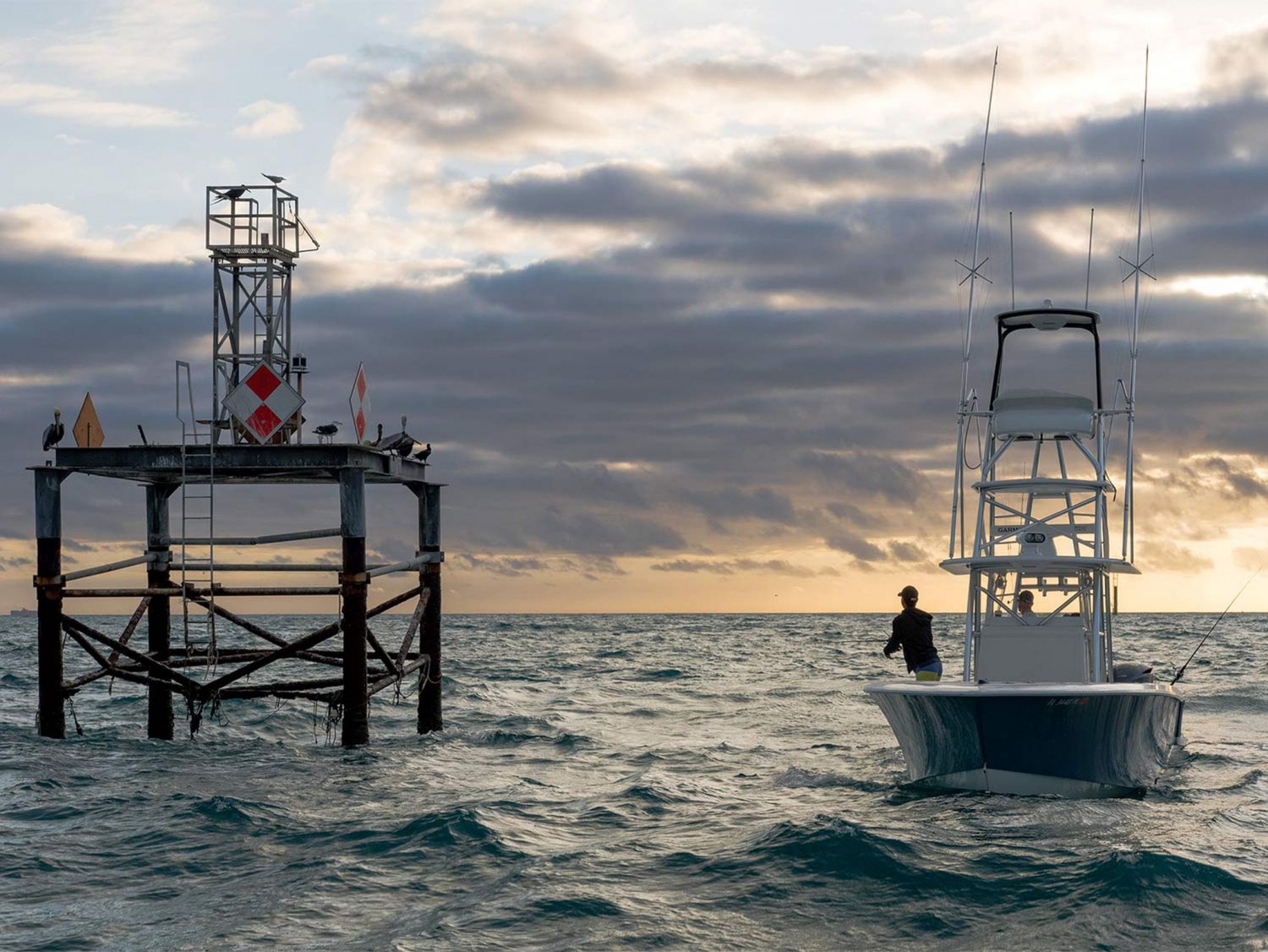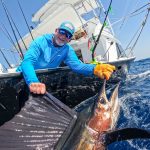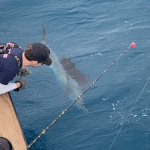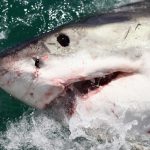Article Courtesy: marlinmag.com | Originally Published: 10/12/20 | Click here for original article
Reversing Miami’s Bait Debacle
Biscayne Channel Light—known as Bug Light to South Floridians—was a navigational aid that stood off Key Biscayne, Florida, since 1929. Bug Light served a critical secondary purpose as a haven for various species of baitfish, including pilchards, threadfin herring, blue runners and ballyhoo, and was vital to the area’s recreational live-bait fishermen.
On July 27, 2014, longtime Miami captain Jimmy Lewis posted about the demolition of Bug Light on Facebook. As a local angler sharing the same appreciation, I immediately contacted the US Coast Guard in order to ascertain why it was removed. I was advised that the iconic structure was removed due to changes in Coast Guard policies concerning the ownership and maintenance of its navigational aids. I was also advised that the Bent Range marker, another critical bait-fishing structure, was slated for removal in connection with the PortMiami Deep Dredge Project. In response to this news, I felt compelled to reach out to the Miami fishing community in order to formulate a plan to try to save the BRM. It was too late to save Bug Light, but in my eyes, it was essential that at least one of the markers remain.
First on the agenda was to contact Shoreline Foundation Inc., the marine construction firm that was contracted by the Coast Guard to remove and replace Miami’s existing range-marker system off Government Cut. SFI agreed to put the removal of the BRM on the back end of its contract in order to afford the fishing community time to try to save it, going as far as donating $10,000 to assist the cause. Local angler and outdoorsman Rodney Barreto also provided a personal guarantee to the Shoreline Foundation in the amount of $115,000 to ensure that the BRM remained.
In support of the effort, the fishing community provided letters and emails explaining why the BRM was so critical to them and commenced with their own fundraiser to ensure that the marker survived. While the fundraising efforts were underway, I liaised with Coast Guard attorney Miguel Padilla to develop a suitable plan to transfer title of the BRM from the Coast Guard to Miami-Dade County. Contact was then made with the Capt. Bob Lewis Billfish Challenge for assistance, which, on November 26, 2014, entered into a contract with Miami-Dade County to underwrite the maintenance of the BRM.
On December 2, 2014, Miami-Dade County agreed to take title of the BRM and authorize the entry into an agreement with the Capt. Bob Lewis Billfish Challenge. On December 5, 2014, the Coast Guard issued its order to SFI to suspend any further demolition work relating to the Bent Range marker, and it was, thankfully, officially saved.
The fishing community had donated some $146,000 to save the BRM; Shoreline Foundation’s contract with the Coast Guard was descoped, and they were paid. On March 28, 2018, a bill of sale was issued by Miami-Dade County to the Florida Fish and Wildlife Conservation Commission, which owns and maintains the structure today.
After the BRM was spared from demolition, work to create an artificial reef to replace the loss of Bug Light began. Assisting with the cause, the nonprofit Greater Miami Billfish Tournament, along with its director, Scott Baxter, dedicated numerous hours processing the tax-deductible donations received from the fishing community regarding the Bug Light Shoal Artificial Reef effort.
Finding a deployment site that would meet the Miami-Dade County Department of Environmental Resources Management’s approval was first on the priority list. Several sites proposed by Miami captains Ray Rosher and Mike Puller were not acceptable due to the presence of corals and sea fans, but DERM did, however, authorize an alternate area, and the permitting process started with the Army Corps of Engineers and the Florida Department of Environmental Protection to approve the 300-by-300-foot site.
The fishing community pooled its efforts to obtain suitable materials to be deployed at the reef site. Rose Engineering Contractors donated various pipes and other materials, while Miami-area businessmen Chris de Moya, Michael Kornahrens and James Weatherspoon transported them to the storage site free of charge. Robert Chang donated funds to cover other costs associated with the logistics, and the efforts were moving forward.
Kearns Marine Construction won the bid for phase one of the project, and in May and June 2019, Kearns deployed the materials at the reef site. Within days of this deployment, baitfish were congregating. The first phase was a success, and ready to serve South Florida fishermen.
Phase Two began with the collection of additional materials. Kearns Construction donated materials, and the Ebsary Foundation donated storage cubes, necessary trucks, crane and labor to deliver them to the DERM storage site staged on the Miami River. Boatbuilder Roy Merritt not only donated boulders to the cause, but also paid Chin Diesel for the transportation costs to deliver them from Pompano, Florida.
Callaway Marine Technologies—a firm specializing in underwater structures and marine construction—won the deployment bid, and although there was approximately $43,000 on hand for the cause, an additional $67,000 needed to be raised in order to carry out phase two. The fishing community responded again, with key donations from the Miami Super Bowl Host Committee, the Greater Miami Billfish Tournament, Crook & Crook Marine and Tackle, as well as numerous others who selflessly gave to make this a reality. Thanks to these gifts, the supplemental materials should be in place by the end of summer 2020.
Bug Light was an extremely vital piece of South Florida’s fishing history, and the community’s commitment to the Bug Light Shoal Artificial Reef Project is limitless. Even though the Bug Light we knew is gone, it exists now in shoal form, both as a successful conservation story and evidence of a fishing community’s desire to provide a habitat where baitfish can once again thrive. To follow future efforts to expand additional reef sites around Miami, please join the Bug Light Shoal Artificial Reef Project on Facebook. By Bruce Marx, Esq, as told to Capt. Jen Copeland






